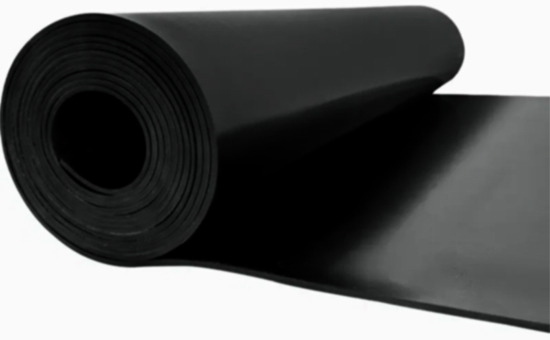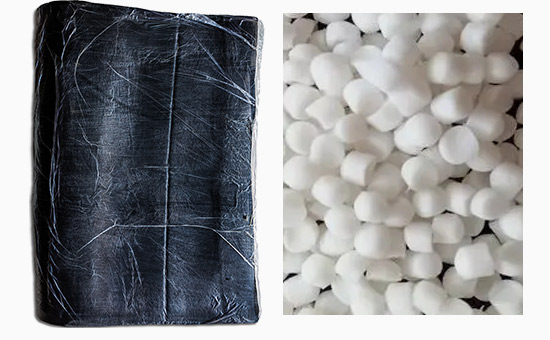Nitrile rubber and polyvinyl chloride are both polar polymers with similar solubility parameters and good compatibility, and can be blended in any proportion to prepare thermoplastic elastomers. As an option raw material for nitrile rubber, nitrile reclaimed rubber has the basic performance characteristics of nitrile original rubber, and can be blended with PVC alone, or nitrile rubber/nitrile reclaimed rubber/PVC blended; When blending R-NBR/PVC, rubber product manufacturers need to pay attention to the following points.
1. Changes in the properties of nitrile reclaimed rubber/PVC blend
When the nitrile rubber material is blended with polyvinyl chloride, when the amount of polyvinyl chloride exceeds 25%, the ozone resistance, sunlight crack resistance, oil resistance, solvent resistance, abrasion resistance, tear strength, combustion E4LYY123resistance, flexural crack resistance, etc. of the blend are better than those of nitrile rubber, and the calendering and extrusion shrinkage are small, easy to color, and the surface of the semi-finished product is smoother and brighter. However, with the increase of the amount of polyvinyl chloride, the Mooney viscosity of the blend will increase, the plasticity will decrease, the low-temperature flexibility and elasticity will decrease, and the high-temperature compression set will be larger, so the amount of polyvinyl chloride must be strictly controlled when blending nitrile reclaimed rubber and polyvinyl chloride.
2. Nitrile reclaimed rubber/PVC blend system selection skills

With the increase of acrylonitrile content, the compatibility of nitrile rubber, nitrile reclaimed rubber and PVC is improved, but the low-temperature flexibility becomes worse, so it is recommended to choose nitrile rubber with low Mooney viscosity among 34%-38.5% acrylonitrile and nitrile reclaimed rubber and polyvinyl chloride to improve the dispersion effect, improve the processing performance of rubber and the low-temperature flexibility of the blend.
Hot-poly nitrile butadiene rubber must be plasticized before it can be used, and the degree of plasticity should be controlled at 0.2-0.28, the plasticity is too small, and it is hardened with glue, and the performance of mixing, calendering and molding processes is poor; If the plasticity is too large, the permanent deformation will increase.
3. Nitrile reclaimed rubber/PVC blend system selection skills
When nitrile reclaimed rubber and polyvinyl chloride are blended to prepare thermoplastic elastomers, the blending ratio of nitrile reclaimed rubber, nitrile reclaimed rubber and polyvinyl chloride is arbitrary, and it is common for nitrile rubber (the total amount of nitrile rubber and nitrile reclaimed rubber) to be blended with polyvinyl chloride at 1:1; The vulcanization system can be used with low sulfur combination, and a small amount of sulfur can be used with accelerator TMTD/CZ combination; It can be filled with heavy calcium, which has good thermoplasticity; Plasticizers such as diooctyl phthalate are used to form a softening system.

4. Key points of the production process of nitrile reclaimed rubber/polyvinyl chloride blend
Nitrile reclaimed rubber/PVC blend blends can be compounded on an internal mixer or open mill. When the open mill is used, the roller spacing should be small, and after the roll is wrapped, various compounding agents can be added according to the general mixing process. By using the mechanical high-temperature blending method, the nitrile reclaimed rubber/polyvinyl chloride, nitrile rubber/nitrile reclaimed rubber/polyvinyl chloride thermoplastic elastomer with better performance and lower cost can be prepared.
In actual production, nitrile reclaimed rubber can also be used in combination with nitrile rubber powder to increase the elasticity of polyvinyl chloride, and the follow-up editor will continue to discuss related issues with you.
Exclusive original article [commercial authorization] reprint, excerpt and excerpt in any form are prohibited without written authorization. Focus on Hongyun rubber: learn the process formula and raw material technology of producing rubber products from recycled rubber to help you reduce costs and increase profits